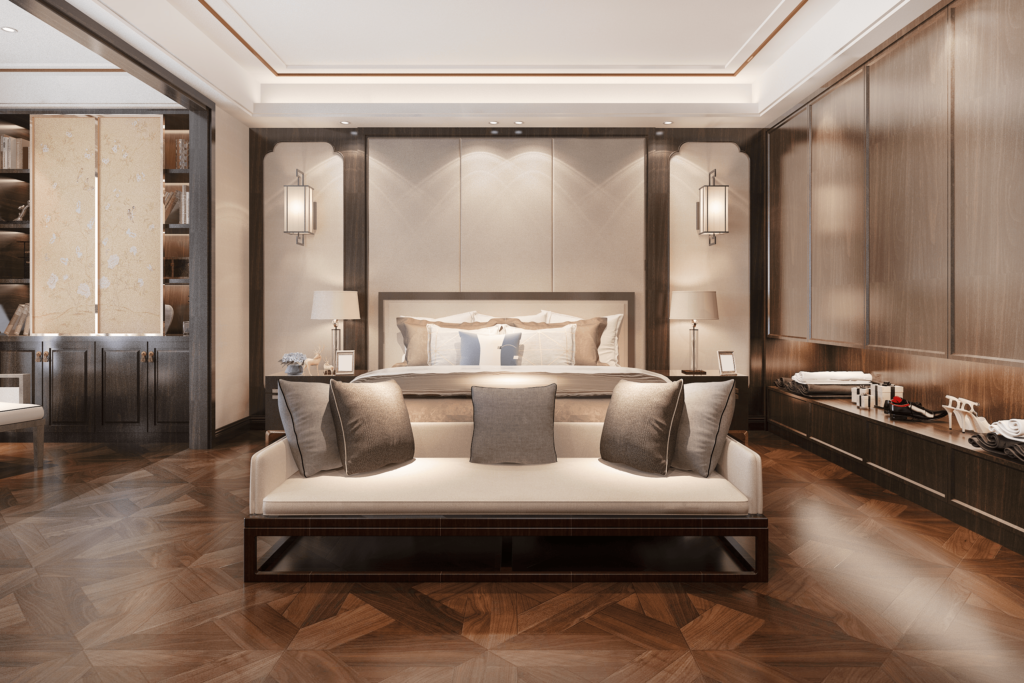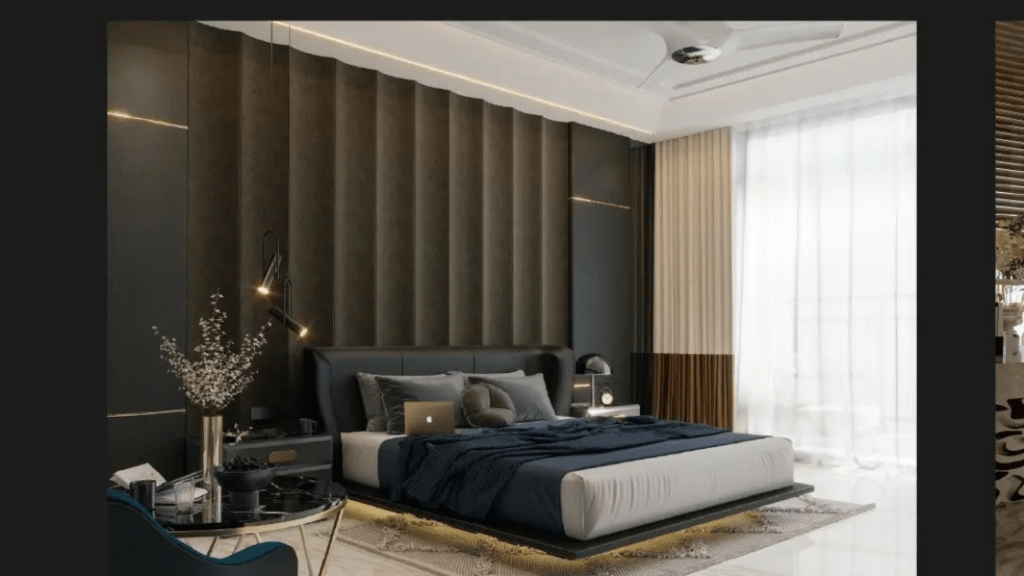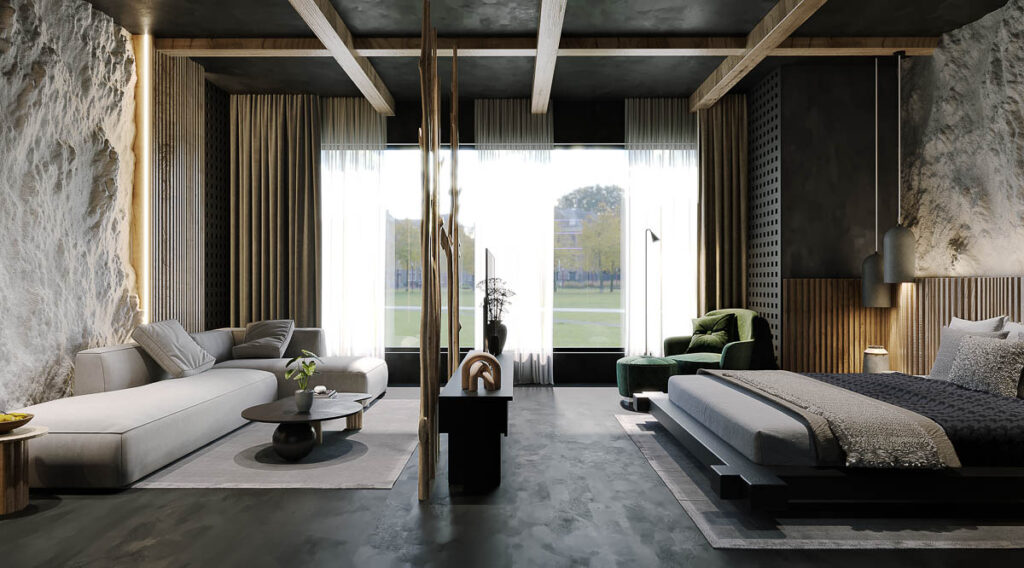Choosing the Right Materials for Luxury Interior Design in Delhi’s Climate
Delhi, the bustling heart of India, holds within its boundaries a unique blend of tradition and modernity, and this duality is prominently reflected in its climate. Delhi’s climate, marked by scorching summers, relief-bringing monsoons, and chilly winters, offers both challenges and opportunities to interior designers, especially those focused on luxury interior design in Delhi NCR.
In this extensive exploration, we will learn how Delhi’s climate influences interior design choices. We will uncover the strategies employed by luxury interior designers to not only endure but also embrace the city’s weather patterns. From battling the searing summer heat to celebrating the monsoon’s arrival and staying cozy during the winter chill, luxury interior design in Delhi is a dynamic field that artfully weaves climate-conscious strategies into the fabric of opulence and sophistication.
1. The Battle against the Blazing Summer
Delhi’s summers are nothing short of intense, with mercury levels soaring above 40 degrees Celsius (104 degrees Fahrenheit). In the face of this relentless heat, interior designers focus on cooling strategies to prioritize comfort and aesthetics.
Light Color Palettes: The choice of color palettes leans heavily towards lighter shades like whites, creams, and pastels. These colors are visually soothing and reflect sunlight, keeping interiors relatively cool than outside. The effect is an ambiance that seems to push back against the relentless sun.
Optimal Ventilation: To counter the oppressive heat, ensuring proper cross-ventilation is imperative. Large windows and strategically placed doors become essential components of the design. They facilitate efficient air circulation, helping to maintain a tolerable indoor temperature even during the peak of summer.
Use of Natural Materials: Upholstery and drapery often feature organic materials like cotton and linen. These fabrics are breathable and offer comfort against the skin. They create a sense of relaxation and ease, allowing homeowners to retreat from the scorching outdoors.
Window Coverings: Window treatments are carefully selected to balance aesthetics with practicality. Light-colored curtains or blinds with reflective surfaces help to block out harsh sunlight while allowing soft, diffused light to filter through. This regulates temperature but also creates a pleasing visual effect.
2. Embracing the Monsoon’s Arrival
The monsoon season in Delhi, marked by heavy rains and high humidity, brings comfort from the intense summer heat but introduces different challenges. Luxury interior designers adapt to these changes by incorporating specific design elements.
Water-Resistant Materials: Given the likelihood of moisture intrusion during monsoons, furniture and furnishings are chosen for their ability to resist dampness. Outdoor materials like teak wood, rattan, and waterproof fabrics are the popular choices for outdoors. These materials can withstand moisture without compromising on aesthetics.
Flooring Solutions: Flooring options are carefully considered for their water-resistant properties. Ceramic tiles, terracotta, and sealed concrete often take precedence. These materials can withstand dampness and are easy to clean, ensuring that interiors remain pristine even in the wettest weather.
Aesthetic Rain Protection: To use outdoor spaces during the monsoon while safeguarding them from sudden downpours, designers incorporate overhangs, canopies, or pergolas. These features provide shelter without sacrificing aesthetics, ensuring homeowners can enjoy their outdoor areas regardless of the weather.
3. Warding off the Winter Chill
Delhi’s winters are characterized by chilly temperatures, often dropping below 5 degrees Celsius (41 degrees Fahrenheit). To make homes cozy and inviting during the cold season, luxury interior designers employ various strategies.
Cozy Textiles: Soft, warm textiles like wool, cashmere, and faux fur take their place in interiors. These materials create a snug atmosphere and offer physical warmth. They also contribute to the overall aesthetics by adding layers of texture and visual interest.
Heating Solutions: Delhi’s winter necessitates efficient heating solutions. Radiant floor heating, electric fireplaces, and energy-efficient central heating systems are commonly used. These systems ensure homes stay comfortably warm even on the coldest winter nights.
Layered Lighting: Adequate lighting is essential to create a cozy ambiance on dark winter evenings. Luxury interior designers often employ layered lighting, combining warm-toned ambient lighting with task lighting. This layering not only serves functional purposes but also enhances the overall warmth of the space.
4. Sustainable Year-Round Design
Sustainability is a global concern, and Delhi is no exception. Interior designers in the city are increasingly incorporating eco-friendly practices into their designs, regardless of the season.
Energy-Efficient Fixtures: To reduce energy consumption and promote sustainability, designers often opt for energy-efficient fixtures such as LED lighting, appliances with high energy efficiency ratings, and HVAC systems designed to optimize energy use.
Green Spaces: Indoor plants play a dual role in interiors. They improve indoor air quality and contribute to a sense of connection with nature, regardless of the season. Greenery introduces a refreshing contrast to the city’s concrete jungle.
Insulation: Proper insulation is vital to maintaining comfortable indoor temperatures year-round. Well-insulated homes stay cool in the summer and warm in the winter, reducing the need for excessive heating or cooling.
5. Celebrating Seasonal Changes
Delhi’s climate offers distinct seasons, and luxury interior designers often celebrate these changes with adaptable design elements.
Seasonal Decor: Designers may incorporate seasonal decor like cushions, throws, and artwork that reflects the current season. These small but impactful changes add freshness and vitality to interiors, marking the transitions between seasons.
Furniture Flexibility: Modular or multi-purpose furniture is a strategic choice. It allows homeowners to reconfigure their spaces to suit different seasons or purposes, ensuring that the interior remains adaptable to changing needs.
6. The Role of Luxury Interior Designers
Luxury interior designers in Delhi NCR play a pivotal role in curating spaces that can withstand and enhance the city’s dynamic climate. Their expertise assists in blending aesthetics with functionality, ensuring interiors remain inviting and comfortable year-round. These designers are adept at balancing the practical demands of the weather with the luxury and opulence that define their craft. Feel free to visit our website at https://www.vishwakarmainteriors.com or reach out to us via phone to discover how Vishwakarma Architects and Interior Designers can transform your space into a captivating sanctuary that exemplifies the pinnacle of luxury.



